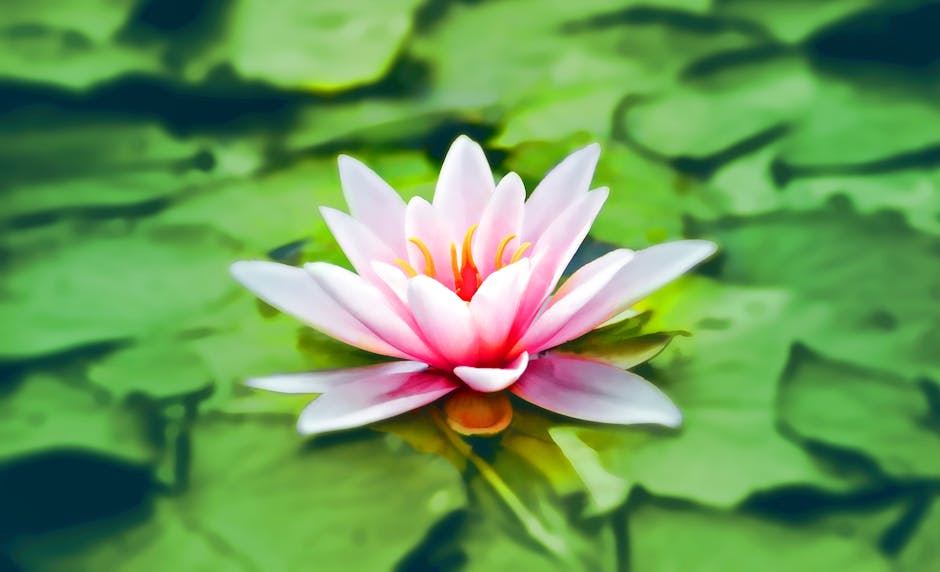Embrace Aquatic Mindfulness: Discover Water-Based Meditation Benefits
Have you ever felt a sense of calm wash over you while near water? Whether it's the gentle ebb and flow of ocean waves or the tranquil ripples of a serene pond, there's something inherently soothing about water. In today's fast-paced world, stress can feel overwhelming. But what if you could harness the healing powers of water through mindful meditation practices? Welcome to the world of aquatic mindfulness, where water-based meditation can significantly reduce stress and enhance overall well-being.
The Allure of Water: Why It Soothes Us

From a biological perspective, the human body has a strong affinity for water. Composed of roughly 60% water, our cells thrive in hydrated environments. This intrinsic connection plays a critical role in our mental health, making water not only a necessity for survival but also an essential element for emotional stability. By engaging in mindful practices around water, you can tap into its healing properties to reduce stress effectively.
Moreover, studies have shown that being near water can lower cortisol levels—our body's primary stress hormone. Just a few moments by a lake or even a short shower can shift your mental state. Imagine meditating in water; the sensation amplifies these benefits, creating an immersive experience that promotes tranquility and mindfulness.
Understanding Aquatic Mindfulness

Aquatic mindfulness combines the principles of meditation with the sensory elements of water. This practice isn't merely about being in or near water; it involves integrating water's calming presence into your meditation routine. Whether you're floating on the surface, practicing yoga in a pool, or simply sitting by a shoreline, aquatic mindfulness taps into your senses in profound ways.
The Benefits of Water as a Meditation Space

-
Enhanced Focus: The rhythmic sounds of water can help you drown out distracting noises, enhancing your ability to concentrate during meditation. This enables deeper introspection and connection with your thoughts.
-
Physical Relaxation: Water naturally supports your body, reducing strain on your muscles and joints. This physical ease can lead to improved comfort during meditation, allowing you to focus without physical distractions.
-
Emotional Release: As you immerse yourself in water, the buoyancy can create a feeling of weightlessness, allowing emotional burdens to release more freely. This sensation mirrors the process of letting go of stress and anxiety.
-
Sensory Stimulation: The coolness of water, the sound of splashes, and the sight of moving water all contribute to a richly stimulating environment. This can heighten your mindfulness experience, making you more present in the moment.
Types of Aquatic Meditation Practices

Meditation in Still Water

Meditating in a calm lake or pool provides an amazing backdrop for mindfulness. The stillness of the water reflects the stillness you seek in your mind. Here's a simple approach to try:
- Find Your Spot: Locate a tranquil body of water where you can sit undisturbed.
- Become Mindful of Your Breath: Close your eyes and focus on your breathing. Inhale deeply, feeling your lungs expand, and exhale slowly, letting go of lingering tension.
- Visualize the Water: Picture the water absorbing your stress as it flows around you. Imagine the waves carrying away your worries.
For more insights into enhancing well-being through mindfulness, explore our article on unlocking the power of mindfulness daily.
Floating Meditation

Floating meditation involves using specialized flotation devices in water. This practice fosters absolute relaxation, creating an environment free from distractions. To engage in floating meditation:
- Use a Floatation Device: Choose a comfortable float, such as a pool noodle or a floatation mat, and lay back.
- Focus on Water's Embrace: Allow your body to float, experiencing the water's gentle support. With your eyes closed, concentrate on the sensation of being cradled by water.
- Release Tension: As you float, take the time to acknowledge and release any tension physically and mentally.
Aqua Yoga

Combining yoga with the buoyancy of water enhances both the physical and psychological benefits of meditation. In a pool setting, you can practice poses with reduced gravity, allowing for deeper stretches with less strain. Consider trying 10-15 minutes of aqua yoga that focuses on relaxation and breathing.
For more practices that can complement your wellness journey, check out our guide on transforming emotions through movement.
Practicing Aquatic Mindfulness in Everyday Life

Incorporating aquatic mindfulness into your daily routine doesn't have to be complicated. Here are some practical tips to make it a part of your life:
-
Beach Walks: Organize regular visits to the beach. Even a 30-minute stroll along the shoreline can serve as a form of aquatic mindfulness. Leave distractions behind and focus on the rhythm of your footsteps and the sound of waves.
-
Bubble Baths with Intention: Transform your bath time into an aquatic mindfulness ritual. Use calming scents, dim the lights, and focus on your breath as you soak.
-
Local Pools: Many community centers offer open pool times. Use these sessions for mindful practices such as floating or gentle stretches.
-
Engage in Water-Based Activities: Join group classes emphasizing mindfulness, such as aqua aerobics or therapeutic swimming sessions. These activities can foster community and deepen your practice.
-
Meditative Soundscapes: While at home, listen to water sounds while meditating or relaxing. The gentle sounds of streams or the ocean can create a calming backdrop.
Research Backing Aquatic Mindfulness

Recent studies emphasize the benefits of water on mental health. Researchers at Harvard University have found a strong correlation between immersion in nature—especially around water bodies—and heightened emotional well-being. The act of being in proximity to water has been linked to reduced anxiety levels and a stronger sense of community.
According to a study published in the Journal of Environmental Psychology, people who spent time near water reported a sense of tranquility and increased feelings of happiness. By integrating water into your mindfulness practices, you're aligning with nature's rhythms, which can lead to enriched happiness and mental clarity.
The Future of Aquatic Mindfulness

As the world increasingly recognizes the significant impact of nature on mental well-being, expect to see more wellness practitioners integrating aquatic mindfulness into their practices. From guided meditation sessions by the waterfront to aquatic therapy programs, the opportunities for healing through water are expanding.
This shift towards holistic health practices calls for embracing experiences that combine mindfulness with nature, fostering enhanced personal growth and community connection.
Final Thoughts

Embracing aquatic mindfulness is an enriching journey toward reducing stress and elevating your mental wellness. As you explore the soothing depths of water-based meditation, you may discover that the healing powers of water are far-reaching and transformative.
Remember that each time you engage in an aquatic mindfulness practice, you’re not just reducing stress; you're also forging a stronger bond with an essential element of life. Start today—whether by taking a moment by the water, floating in a pool, or trying aqua yoga—and immerse yourself in the profound benefits water has to offer. You truly have the power to harness the calming effects of aquatic mindfulness; take the plunge, and let the waves carry you into serenity.



